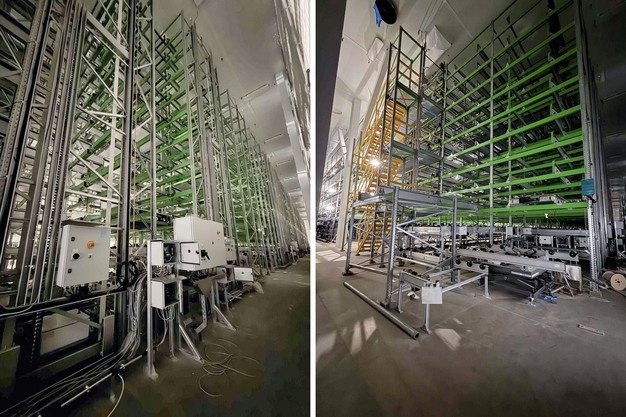Tea, Spices, and Smallholder Farming: An Immersive Tasting and Virtual Reality Experience – City Guide New York

Report on the MOFAD Event: “Tea, Spices, and Smallholder Farming”
Executive Summary
An event was held at the Museum of Food and Drink (MOFAD) focusing on sustainable supply chains and responsible consumerism in the food sector. Titled “Tea, Spices, and Smallholder Farming: An Immersive Tasting and Virtual Reality Experience,” the program featured a collaboration between brands DONA, Burlap & Barrel, and the organization Borderless. The event’s core objective was to highlight sourcing methodologies that align with several United Nations Sustainable Development Goals (SDGs) by uplifting smallholder farmers, promoting environmental stewardship, and fostering transparent supply chains.
Alignment with Sustainable Development Goals (SDGs)
The event’s themes directly address and promote action on multiple SDGs through the lens of the global food and beverage industry.
Primary SDG Focus Areas
- SDG 12: Responsible Consumption and Production: The event was fundamentally designed to educate consumers on the importance of understanding product origins and supporting brands with transparent, sustainable supply chains. It empowered attendees to make informed purchasing decisions that contribute to sustainable production patterns.
- SDG 8: Decent Work and Economic Growth: By showcasing brands that source directly from farmers, the discussion emphasized business models that ensure fair compensation and sustainable livelihoods, contributing to economic growth in farming communities.
- SDG 1: No Poverty & SDG 2: Zero Hunger: The focus on uplifting smallholder farmers is critical to poverty alleviation. Supporting these producers through responsible sourcing enhances their economic stability and food security, which are foundational to achieving SDG 1 and SDG 2.
- SDG 17: Partnerships for the Goals: The collaboration between commercial brands (DONA, Burlap & Barrel) and a social enterprise (Borderless) exemplifies the multi-stakeholder partnerships required to achieve the SDGs.
Secondary SDG Contributions
- SDG 13: Climate Action & SDG 15: Life on Land: The program advocated for agricultural practices that protect the planet. Sourcing from farms that utilize sustainable methods helps mitigate climate change and protect terrestrial ecosystems.
Event Program and Activities
The event utilized a multi-sensory approach to connect consumers with the producers and environments behind food products.
Scheduled Activities
- Panel Discussion on Responsible Sourcing: Representatives from DONA, Burlap & Barrel, and Borderless led a conversation on building ethical supply chains. The discussion centered on how corporate practices can be reoriented to support the SDGs, particularly by prioritizing farmer welfare and environmental health over conventional sourcing metrics.
- Sustainable Product Tasting: Attendees sampled teas and spices sourced directly from global farms. This activity provided a tangible connection to the quality that results from sustainable practices and equitable partnerships, reinforcing the principles of SDG 12.
- Virtual Reality Immersion: A virtual reality experience transported participants to the agricultural landscapes where the ingredients are grown. This tool was used to foster a deeper understanding of the labor, environments, and communities involved in production, creating a direct link to the people whose lives are impacted by progress on SDG 1, SDG 2, and SDG 8.
Conclusion and Strategic Implications
The event served as a platform to address the volatility of modern supply chains by advocating for greater transparency and consumer knowledge. It positioned informed consumerism as a powerful tool for driving corporate responsibility and advancing the Sustainable Development Goals. By illustrating the stories behind products, the program aimed to mobilize consumers to support brands that actively contribute to a more equitable and sustainable global economy.
Venue Details
- Institution: Museum of Food and Drink (MOFAD)
- Address: 55 Water St Flr 2, Brooklyn, NY 11201
Analysis of Sustainable Development Goals (SDGs) in the Article
1. Which SDGs are addressed or connected to the issues highlighted in the article?
-
SDG 8: Decent Work and Economic Growth
- The article mentions a goal to “uplift farmers.” This directly connects to promoting sustained, inclusive, and sustainable economic growth, full and productive employment, and decent work for all, particularly for smallholder farmers in global supply chains.
-
SDG 12: Responsible Consumption and Production
- This is a central theme. The article discusses “responsible ways of sourcing,” “sustainable ingredients,” and empowering consumers to “make choices that truly matter” by knowing the “full story behind the brands.” This directly addresses the need to ensure sustainable consumption and production patterns.
-
SDG 15: Life on Land
- The commitment to “protecting the planet” and sourcing “sustainable ingredients” from farms implies practices that protect, restore, and promote sustainable use of terrestrial ecosystems. This involves agricultural methods that are not harmful to the local environment and biodiversity.
2. What specific targets under those SDGs can be identified based on the article’s content?
-
Target 8.5: By 2030, achieve full and productive employment and decent work for all women and men… and equal pay for work of equal value.
- The phrase “uplifting farmers” suggests an effort to improve their economic conditions, which aligns with providing decent work and better economic value for their labor.
-
Target 12.2: By 2030, achieve the sustainable management and efficient use of natural resources.
- The focus on “protecting the planet” and using “sustainable ingredients” directly relates to managing natural resources like soil and water in a sustainable manner during the farming and sourcing process.
-
Target 12.8: By 2030, ensure that people everywhere have the relevant information and awareness for sustainable development and lifestyles in harmony with nature.
- The event’s purpose is to give consumers the “full story behind the brands” so they can use that “knowledge to make choices that truly matter.” This is a direct effort to increase consumer awareness and promote sustainable lifestyles.
-
Target 15.9: By 2020, integrate ecosystem and biodiversity values into national and local planning, development processes, poverty reduction strategies and accounts.
- Although the target date has passed, the principle remains relevant. The article’s mention of “protecting the planet” through responsible sourcing implies integrating ecosystem values into the business and supply chain development process.
3. Are there any indicators mentioned or implied in the article that can be used to measure progress towards the identified targets?
-
Implied Indicator for Target 8.5: Improved income for smallholder farmers.
- The term “uplifting farmers” implies a measurable improvement in their economic well-being, which could be tracked through income levels or fair-trade pricing structures.
-
Implied Indicator for Target 12.2: Percentage of ingredients sourced from farms using certified sustainable practices.
- The use of “sustainable ingredients” suggests that the source farms adhere to specific practices that can be measured and verified, indicating sustainable management of resources.
-
Implied Indicator for Target 12.8: Level of consumer knowledge about supply chain sustainability.
- The event itself, which provides information and immersive experiences, is a tool to increase consumer knowledge. Progress could be measured by tracking consumer understanding and purchasing behavior based on sustainability information provided by brands.
4. Summary Table of SDGs, Targets, and Indicators
| SDGs | Targets | Indicators (Implied from Article) |
|---|---|---|
| SDG 8: Decent Work and Economic Growth | 8.5: Achieve full and productive employment and decent work for all. | Improved income and economic well-being for smallholder farmers. |
| SDG 12: Responsible Consumption and Production | 12.2: Achieve the sustainable management and efficient use of natural resources. | Adoption of sustainable sourcing practices and use of sustainable ingredients. |
| 12.8: Ensure that people everywhere have the relevant information and awareness for sustainable development. | Increased consumer knowledge of brand supply chains and informed purchasing decisions. | |
| SDG 15: Life on Land | 15.9: Integrate ecosystem and biodiversity values into development processes. | Sourcing from farms that use practices aimed at “protecting the planet.” |
Source: cityguideny.com

What is Your Reaction?
 Like
0
Like
0
 Dislike
0
Dislike
0
 Love
0
Love
0
 Funny
0
Funny
0
 Angry
0
Angry
0
 Sad
0
Sad
0
 Wow
0
Wow
0








































































